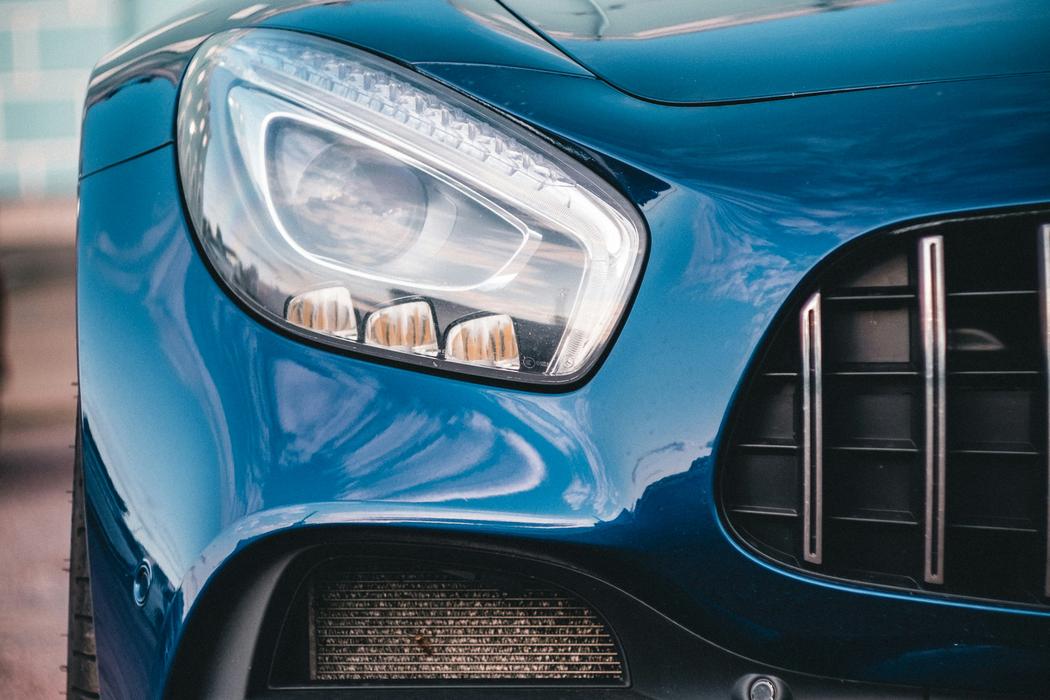As mentioned, paint correction is a careful, step-by-step process designed to safely restore your vehicle’s clear coat and bring back a deep, glossy finish. So let’s go through our exact process at Royal Mobile Detailing. We should also mention that paint correction is best handled at our shop.
Initial Assessment
Every car starts with a full inspection under bright LED lighting. This lets us see what the eye often misses such as swirl marks, light scratches, oxidation, and water spots. We document the condition so you know exactly what’s being corrected.
Preparation Steps
Before polishing, the paint has to be completely clean. We begin with a thorough hand wash, followed by chemical decontamination sprays that dissolve stubborn mineral deposits and iron particles from things like brake dust.
Next comes a clay bar treatment, which glides over the paint to pull out any bonded contaminants that normal washing can’t touch. This leaves the surface smooth and ready for correction.
Machine Polishing Stages
Using rotary, and dual-action polishers, we work in small sections of the vehicle with different pads and compounds. Depending on how severe the defects are, we may perform:
- Single-stage correction – removes about 50–60% of visible defects; great for light swirls and dullness, restoring gloss.
- Two-stage correction – removes about 70–90% of defects; ideal for moderate scratches, oxidation, and heavy swirls.
- Three-stage correction – restores 90%+ of the finish; used for vehicles with significant surface damage, requiring heavy cutting followed by refinement for a near-showroom look.
Each stage involves gradually moving from a more aggressive “cutting” compound and pad (to level out scratches) to finer polishes (to refine clarity and shine).
1, 2, and 3-Step Corrections Explained
The terms “1-step,” “2-step,” or “3-step” corrections often cause confusion. Many assume a “3-step correction” guarantees that all imperfections will be removed. In reality, these terms simply describe how many times a polisher passes over the paint with different compounds and pads.
Here’s the issue: if you book a 3-step service, but your clear coat damage is severe, some imperfections may remain even after all three passes.
At Royal Detailing SD, we avoid that miscommunication by doing test spots and explaining correction in terms of percentage of defects removed (for example, 60%, 80%, or 90%+). This way you know exactly what to expect before we start on the whole vehicle.
Quality Control
After each section is polished, we re-inspect under specialized lighting to confirm the defects are gone and no hazing or “buffer trails” remain. We also use compressed air to blow out dust and polish residue, and carefully wipe each panel to reveal the true finish.
Final Protection
Final protection is an optional service that if purchased, we can apply a ceramic coating after doing a paint correction.
Once the paint is perfected, we apply a professional-grade ceramic coating or sealant. This locks in the gloss, shields against UV rays, water spots, and environmental fallout, and makes future washing easier and safer.
Professional Tools & Techniques
Throughout the process we use purpose-built equipment: rotary, and dual-action polishers for safe correction, foam and microfiber pads matched to the job, cutting compounds for defect removal, and finishing polishes for maximum gloss. Every adjustment from pad type to machine speed is tailored to your vehicle’s paint type, thickness, and condition.
Paint Enhancement Option
Not every car needs a full multi-stage correction. For daily drivers or vehicles with only light imperfections, paint enhancement is a great alternative. This is the least aggressive method and usually involves one pass with an orbital polisher. It won’t remove every defect, but it will noticeably reduce swirls and haze while restoring gloss — all at a fraction of the cost and time of a full correction.
